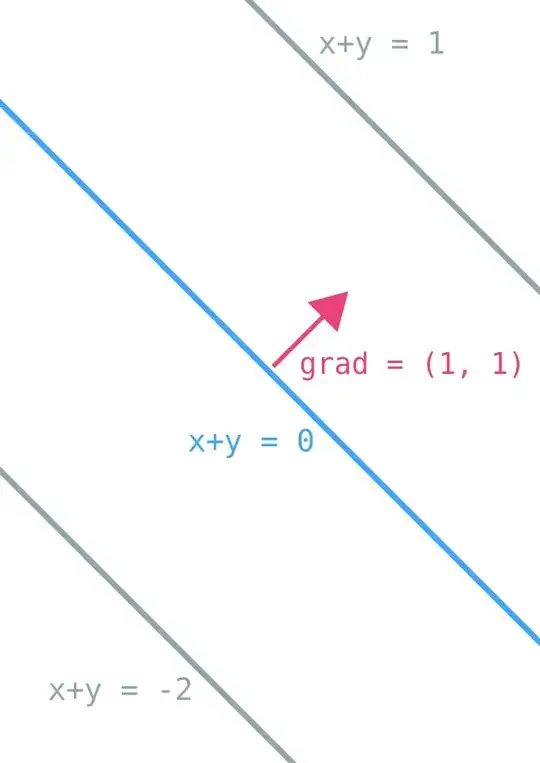Let's consider the situation in $2D$ --- our humble line equation uses a function $f(x, y) \equiv ax + by$, and our line is defined by the solution set $L \equiv \{ (x, y) : f(x, y) = 0 \}$. (For now, let's stick to lines passing through the origin).
If we now consider the gradient, we get
$$
n \equiv \nabla f \equiv \left( \frac{\partial f}{\partial x}, \frac{\partial f}{\partial y} \right) = (a, b)
$$
I denote the gradient by $n \equiv (a, b)$ (for normal), since I'm going to rewrite $f$ as follows:
$$
f: \mathbb R \times \mathbb R \rightarrow \mathbb R \qquad f(x, y) = ax + by = (a, b)^T(x, y)
$$
If I now write $f$ as a function that recieves one argument $p \in \mathbb R^2$, I can write the above equation as:
$$
f: \mathbb R^2 \rightarrow \mathbb R \qquad f(p) = n^T p
$$
Our line is defined by $L \equiv \{ p \in \mathbb R^2 : f(p) = 0 \}$, which means that we want to find those directions p which are orthogonal to n. This (algebraically) tells us why the gradient allows us to find the normal.
Now a particular example: $x + y = 0$:

The gradient points in the direction where the quantity $x + y$ increases. What we're interested is in all those points where $x + y = \texttt{constant}$. So:
- our line is going to be perpendicular to the gradient, since our line does not want $x + y$ to change, while the gradient is the direction along with $x + y$ changes.
- Hence, the gradient is going to be perpendicular to points on the line $L$.
